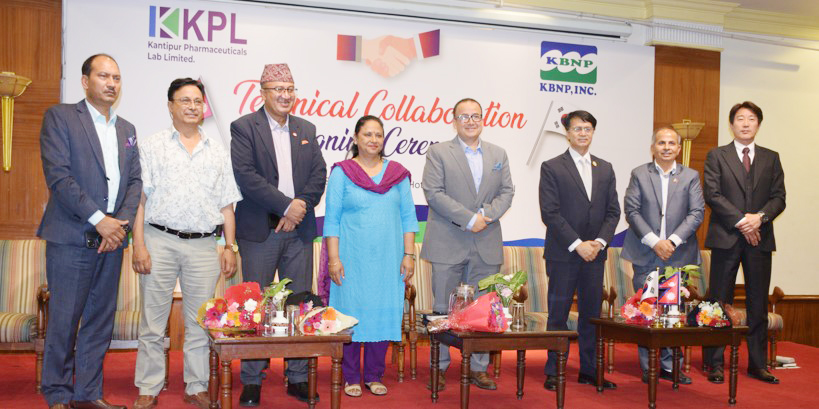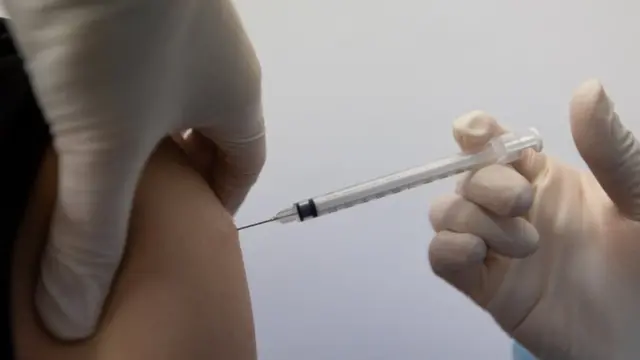Nepal Health News, Kathmandu – After U.S. President Donald Trump halted foreign aid and nearly shut down USAID at the beginning of his second term, concerns have grown over the potential impact on Nepal’s health sector.
Billions in Aid Uncertain
In the past, the U.S. provided around 5 billion Nepali rupees directly to government programs and even more through non-treasury channels, according to Minister Pradeep Paudel. American aid had been particularly significant in areas like nutrition and immunization awareness programs. “These programs are sensitive and important, so we will not stop them,” said Minister Paudel. “It is not possible to cut or suspend programs related to nutrition or immunization.”
He acknowledged that Nepal might now need to continue these programs through internal funding. However, as the government’s investment capacity is decreasing and aid is either being cut or suspended, Nepal has asked development partners to ensure continuity. If necessary, the government plans to reallocate funds from other budgetary headings or reduce non-essential programs to maintain these vital services.
What Will Be the Impact?
More than direct government aid, a significant portion of U.S. assistance came through NGOs. These organizations ran public awareness campaigns, nutrition programs for malnourished children, and free treatment services for diseases like HIV/AIDS and tuberculosis.
The U.S. provided $72 million (around 10 billion rupees) over five years (2024–2029) to run integrated nutrition programs in 498 municipalities across 48 districts. While Nepal has made progress in reducing child malnutrition, it is still not enough. According to a recent health and population survey, the rate of stunting due to malnutrition fell from 57.5% in 1996 to 25.5% in 2022. However, 8% of children still suffer from wasting, meaning they do not have weight proportionate to their height.
Experts warn that if these issues aren't continuously addressed, they could lead to serious long-term impacts on both physical and mental development.
The government has prioritized immunization programs. According to the WHO, in 2023 Nepal spent 1.95 billion rupees on vaccines for regular immunization, of which the government funded 540 million. The total cost for all regular immunization programs in 2023 was 3.95 billion rupees, with the government bearing nearly half of that. These vaccination and nutrition programs are also linked to reducing child mortality rates. Nepal aims to reduce under-five mortality from 27 per 1,000 live births in 2022 to 20 by 2030.
“There’s no doubt that the sudden funding cut has had an impact,” says public health expert Dr. Sharad Wanta. “But the extent of the impact has not been clearly evaluated yet.”
He emphasized that the affected areas—nutrition, immunization, maternal and child health, and family planning—are too crucial to ignore. The U.S. support included awareness, community-based programs, research, and direct services.
Other affected programs include family planning, safe motherhood, climate resilience, and biodiversity conservation.
What Are the Options?
The Trump administration stated that U.S. foreign aid would be reviewed based on whether it aligns with American interests and supports U.S. power and prosperity. It remains unclear when or how USAID programs, which previously mobilized about 16 billion rupees annually in Nepal, will resume.
Experts say options to replace this sudden loss of funding are limited.
Dr. Wanta stresses the need to find a solution: “The halt of U.S. aid isn’t just in Nepal—it’s a global issue. But I believe no citizen should be deprived of basic services due to internal policy changes of another country.”
He outlines three potential solutions for the government:
-
Mobilize internal resources – Reallocate from other programs based on priority.
-
Seek alternative international donors – Fill the gap with support from other partner countries.
-
Reallocate within the health sector – Shift funds from less critical to more essential programs.
According to Health and Population Minister Pradeep Paudel, while the government is exploring various options, no foundation or trust can fully replace the level of aid Nepal was receiving from the U.S. He admitted it will be difficult to get that same level of support from elsewhere, but efforts are ongoing to reach out to other potential partners.
Still, there is hope that the U.S. will resume aid. “Because this aid was truly reaching the targeted groups and benefiting them meaningfully, we believe the American government will reconsider,” said Minister Paudel.
Dr. Wanta added that while the halted aid is a concern, “the sky isn’t falling.” Instead, he sees this as a chance for Nepal to view the crisis as an opportunity and reduce its dependency in the long term.




